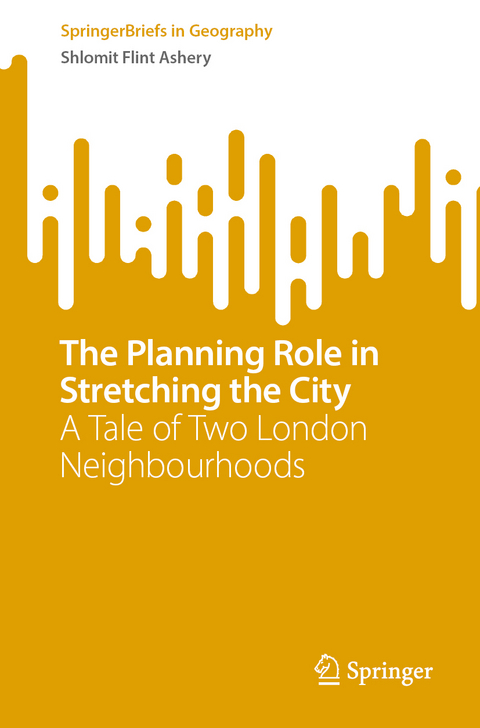
The Planning Role in Stretching the City
Springer International Publishing (Verlag)
978-3-031-35482-3 (ISBN)
Based on two neighbourhoods in London, it contributes to our understanding of housing decisions in the context of illegality and shows the capacity of a given urban form for adaptation: It creates a new semi-private/public space, partly segregated yet deeply integrated; a sphere that, on the one hand, enables traditional 'nested' places and, on the other, a fertile environment for integration. This manuscript contributes two new ideas to the knowledge base of residential selections and the geography of opportunities. The first is a detailed analysis of a hyper-segregation/integration pattern resulting from complementary residential strategies operating at the individual unit level. The second is multidimensional stretching, a bottom-up initiation that allows individuals to maximize resources through territorial and spatial practices.
Shlomit Flint Ashery is an architect, planner, and the head of Bar Ilan University's urban planning programme. Her research interests focus on social and cultural geography; urban development; planning theory, implementation, policy and practice and geodesign. Dr Flint Ashery's term "micro segregation" has attracted much academic attention. Springer published her previous two books in the Urban Book Series.
Introduction.- 1) Approaches to social-residential relations.- 2) Methodology.- 3) Managing residential selections in the context of illegality.- 4) Legal status as a cause for Residential constraints.- 5) Ethnicity as a bridge between Stated and Revealed residential preferences.- 6) The effect of different compositions of social ties on residential selections.- 7) Ties between undocumented individuals of the same community.- 8) Ties between undocumented individuals of different communities.- 9) Ties between undocumented and documented individuals of the same community.- 10) Ties with documented individuals of different communities.- 11) Conclusion.
| Erscheinungsdatum | 12.09.2023 |
|---|---|
| Reihe/Serie | SpringerBriefs in Geography |
| Zusatzinfo | XII, 109 p. 21 illus., 14 illus. in color. |
| Verlagsort | Cham |
| Sprache | englisch |
| Maße | 155 x 235 mm |
| Gewicht | 245 g |
| Themenwelt | Geisteswissenschaften ► Geschichte |
| Studium ► 1. Studienabschnitt (Vorklinik) ► Physiologie | |
| Naturwissenschaften ► Geowissenschaften ► Geografie / Kartografie | |
| Schlagworte | Communities • Homelessness • Residential Selections • Social network • Undocumented Migrants |
| ISBN-10 | 3-031-35482-6 / 3031354826 |
| ISBN-13 | 978-3-031-35482-3 / 9783031354823 |
| Zustand | Neuware |
| Informationen gemäß Produktsicherheitsverordnung (GPSR) | |
| Haben Sie eine Frage zum Produkt? |
aus dem Bereich


